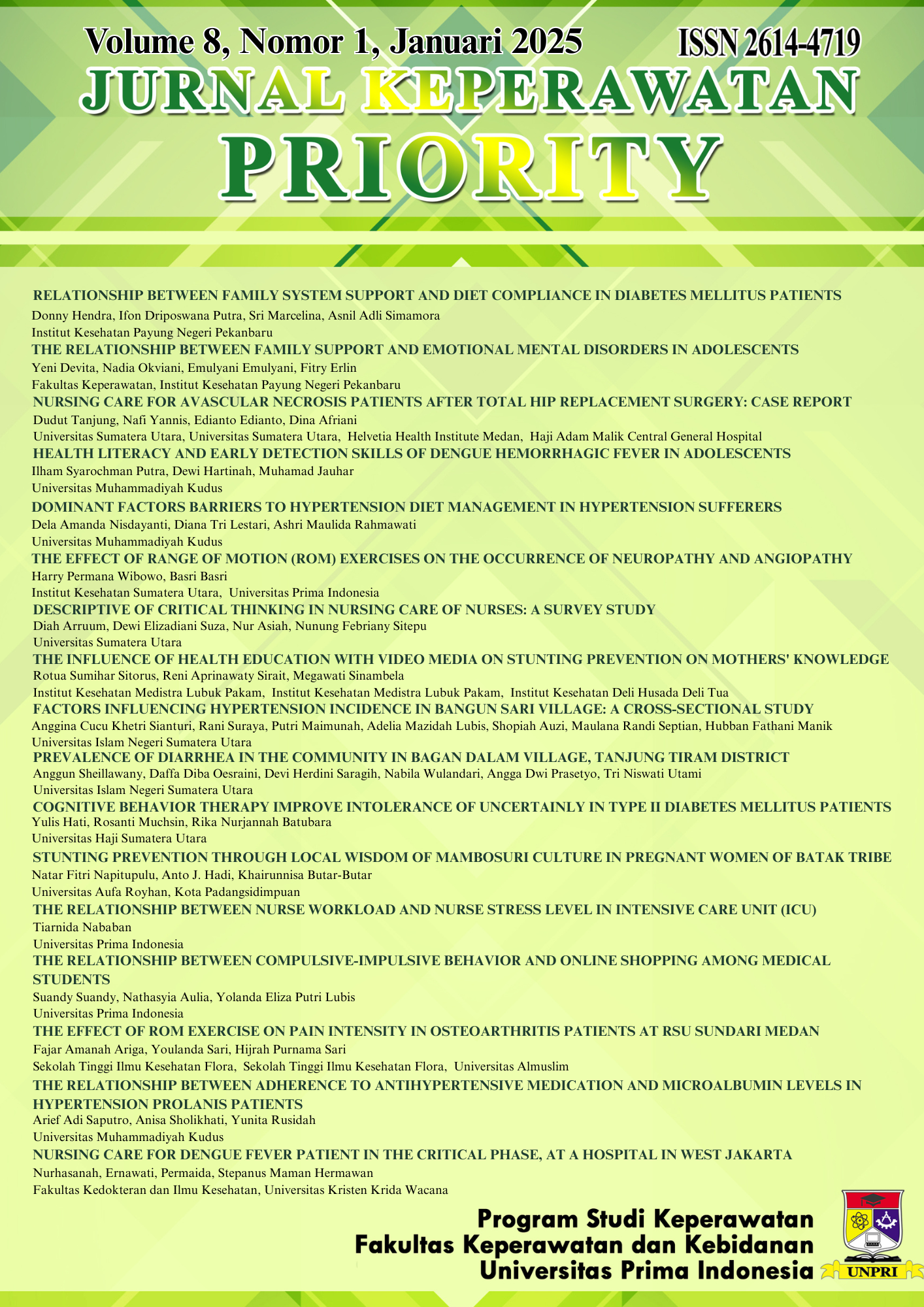The Effect of Range of Motion (ROM) Exercises on the Occurrence of Neuropathy and Angiopathy
DOI:
https://doi.org/10.34012/jukep.v8i1.5963Keywords:
range of motion, exercises, diabetes mellitusAbstract
Ankle ROM training involves two movements: dorsiflexion and plantarflexion, which enhances calf muscle strength and pumping, facilitating venous return and reducing oxygen and nutrient diffusion, thus promoting overall health. This study provides active lower ROM intervention to diabetes mellitus patients twice a day for 6 consecutive days simultaneously. This type of research uses quasi-experimental research using two groups pretest-posttest, namely an experimental design where there are control and intervention groups. The samples in this study were 35, of which 17 samples were for the intervention group and 18 samples were for the control group. The research found that ankle ROM exercises significantly improved the DNE score and ABI value in both the intervention and control groups, with a statistical test result of p = 0.000 in the DNE score. It can be believed that there is a significant difference between the DNE scores of the intervention group, and the control group after doing ankle ROM exercises (p = 0.000), then H0 was rejected or there was an effect of ROM exercises on reducing the risk of neuropathy. Meanwhile, the ABI value showed a statistical test result of p = 0.002 and it can be believed that there is a significant difference between the ABI values of the intervention group and the control group after ankle ROM exercises (p = 0.002), so H0 is rejected or there is an effect of ROM exercises on reducing the risk of Angiopathy.
Downloads
Published
How to Cite
Issue
Section
License
Copyright (c) 2025 Harry Permana Wibowo, Basri Basri

This work is licensed under a Creative Commons Attribution 4.0 International License.
Authors who publish their manuscripts through the Journal of Keperawatan Priority agree to the following:
- Copyright to the manuscripts of scientific papers in this Journal is held by the author.
- The author surrenders the rights when first publishing the manuscript of his scientific work and simultaneously the author grants permission / license by referring to the Creative Commons Attribution 4.0 International License to other parties to distribute his scientific work while still giving credit to the author and the Journal of Journal Keperawatan Priority as the first publication medium for the work.
- Matters relating to the non-exclusivity of the distribution of the Journal that publishes the author's scientific work can be agreed separately (for example: requests to place the work in the library of an institution or publish it as a book) with the author as one of the parties to the agreement and with credit to sJournal ofJournal Keperawatan Priority as the first publication medium for the work in question.
- Authors can and are expected to publish their work online (e.g. in a Repository or on their Organization's/Institution's website) before and during the manuscript submission process, as such efforts can increase citation exchange earlier and with a wider scope.

















